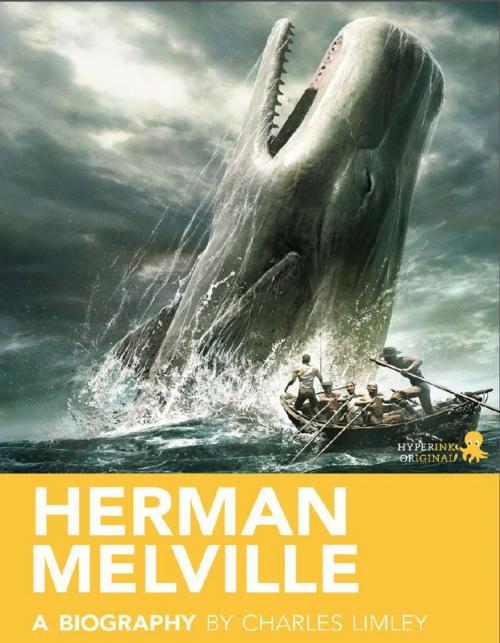| Author: | Charles Limley | ISBN: | 9781614646419 |
| Publisher: | Hyperink | Publication: | July 30, 2012 |
| Imprint: | Hyperink | Language: | English |
| Author: | Charles Limley |
| ISBN: | 9781614646419 |
| Publisher: | Hyperink |
| Publication: | July 30, 2012 |
| Imprint: | Hyperink |
| Language: | English |
ABOUT THE BOOK
After being employed at a variety of odd jobs, none of which provided any lucrative or meaningful work, Herman Melville boarded the whaling ship, Acushnet, in 1841. The ship sailed out of Fairhaven, Massachusetts and headed for the Pacific Ocean by way of Cape Horn. This voyage initiated what would become a “four year adventure that drew the young artist outside the boundaries of Western ‘civilization’ and thrust him into direct interaction with radically different cultures.”
By the time June 1842 rolled around, Melville had become somewhat tired of life aboard the ship. Consequently, he and his friend, Toby Greene, deserted the Acushnet and stayed behind at Nuku Hiva, the largest of the Marquesas Islands of French Polynesia. Envisioning adventures and a life of novel experiences, Melville and Greene were “tempted by a desire to try life on a lush tropical island among a gentle, unspoiled people” rather than continue on with the the Acushnet, which “had been tedious” and unproductive.
As the two men worked their way into the island’s interior, Melville injured his leg, and they were forced to stay with the nearby Typee tribe. Aboard the ship, Melville and Greene had heard horrific tales regarding the Typee people, in which they were described as fierce and violent cannibals. The reality of life with the Typees, however, was much different. The Typees allowed Melville and Greene to stay with them while Melville recovered.
EXCERPT FROM THE BOOK
Melville died an unrecognized, unappreciated genius of American literature. Although his early writing efforts of the 1840s led to some degree of celebrity as a writer of exotic adventures, by the time he died in 1891, he had fallen almost entirely out of the graces of the American literary scene. Indeed, “his death evoked but a single obituary notice,” and even this incorrectly referred to him as “Henry Melville.”
Throughout his entire life, Melville had struggled financially and had experienced the tragic deaths of several family members. Many of his works reflect his personal association with pain, suffering, and death, and his personal disillusionment and cynicism may be read within the pages of both his prose and his poetry. His skillful and perceptive abilities to describe objects and situations, and to delve into the psychology of his characters serve as notable complements to the darker aspects of his work. In the end, Melville’s literature becomes engaging and deep. He is not only a writer, but an “observer of human nature in all its strengths and weaknesses,” and “many of his works are steeped in metaphor and allegory, at times cynical, others satirical.”
Thirty years after Melville’s death, in the 1920s, scholars began to revisit and re-read his writings. As scholars began recognizing the depth, grandeur, and artistic, philosophical, and historical merit contained in his words, American culture experienced a type of Melville renaissance...
Buy the book to continue reading!
Follow @hyperink on Twitter!
Visit us at www.facebook.com/hyperink!
Go to www.hyperink.com to join our newsletter and get awesome freebies!
CHAPTER OUTLINE
Herman Melville: A Biography
+ Translating Experience Into Fiction: An Introduction To Herman Melville
+ Financial Struggles: Melville's Early Years
+ Melville The Writer: Adult Life
+ Posthumous Recognition
+ ...and much more
ABOUT THE BOOK
After being employed at a variety of odd jobs, none of which provided any lucrative or meaningful work, Herman Melville boarded the whaling ship, Acushnet, in 1841. The ship sailed out of Fairhaven, Massachusetts and headed for the Pacific Ocean by way of Cape Horn. This voyage initiated what would become a “four year adventure that drew the young artist outside the boundaries of Western ‘civilization’ and thrust him into direct interaction with radically different cultures.”
By the time June 1842 rolled around, Melville had become somewhat tired of life aboard the ship. Consequently, he and his friend, Toby Greene, deserted the Acushnet and stayed behind at Nuku Hiva, the largest of the Marquesas Islands of French Polynesia. Envisioning adventures and a life of novel experiences, Melville and Greene were “tempted by a desire to try life on a lush tropical island among a gentle, unspoiled people” rather than continue on with the the Acushnet, which “had been tedious” and unproductive.
As the two men worked their way into the island’s interior, Melville injured his leg, and they were forced to stay with the nearby Typee tribe. Aboard the ship, Melville and Greene had heard horrific tales regarding the Typee people, in which they were described as fierce and violent cannibals. The reality of life with the Typees, however, was much different. The Typees allowed Melville and Greene to stay with them while Melville recovered.
EXCERPT FROM THE BOOK
Melville died an unrecognized, unappreciated genius of American literature. Although his early writing efforts of the 1840s led to some degree of celebrity as a writer of exotic adventures, by the time he died in 1891, he had fallen almost entirely out of the graces of the American literary scene. Indeed, “his death evoked but a single obituary notice,” and even this incorrectly referred to him as “Henry Melville.”
Throughout his entire life, Melville had struggled financially and had experienced the tragic deaths of several family members. Many of his works reflect his personal association with pain, suffering, and death, and his personal disillusionment and cynicism may be read within the pages of both his prose and his poetry. His skillful and perceptive abilities to describe objects and situations, and to delve into the psychology of his characters serve as notable complements to the darker aspects of his work. In the end, Melville’s literature becomes engaging and deep. He is not only a writer, but an “observer of human nature in all its strengths and weaknesses,” and “many of his works are steeped in metaphor and allegory, at times cynical, others satirical.”
Thirty years after Melville’s death, in the 1920s, scholars began to revisit and re-read his writings. As scholars began recognizing the depth, grandeur, and artistic, philosophical, and historical merit contained in his words, American culture experienced a type of Melville renaissance...
Buy the book to continue reading!
Follow @hyperink on Twitter!
Visit us at www.facebook.com/hyperink!
Go to www.hyperink.com to join our newsletter and get awesome freebies!
CHAPTER OUTLINE
Herman Melville: A Biography
+ Translating Experience Into Fiction: An Introduction To Herman Melville
+ Financial Struggles: Melville's Early Years
+ Melville The Writer: Adult Life
+ Posthumous Recognition
+ ...and much more















